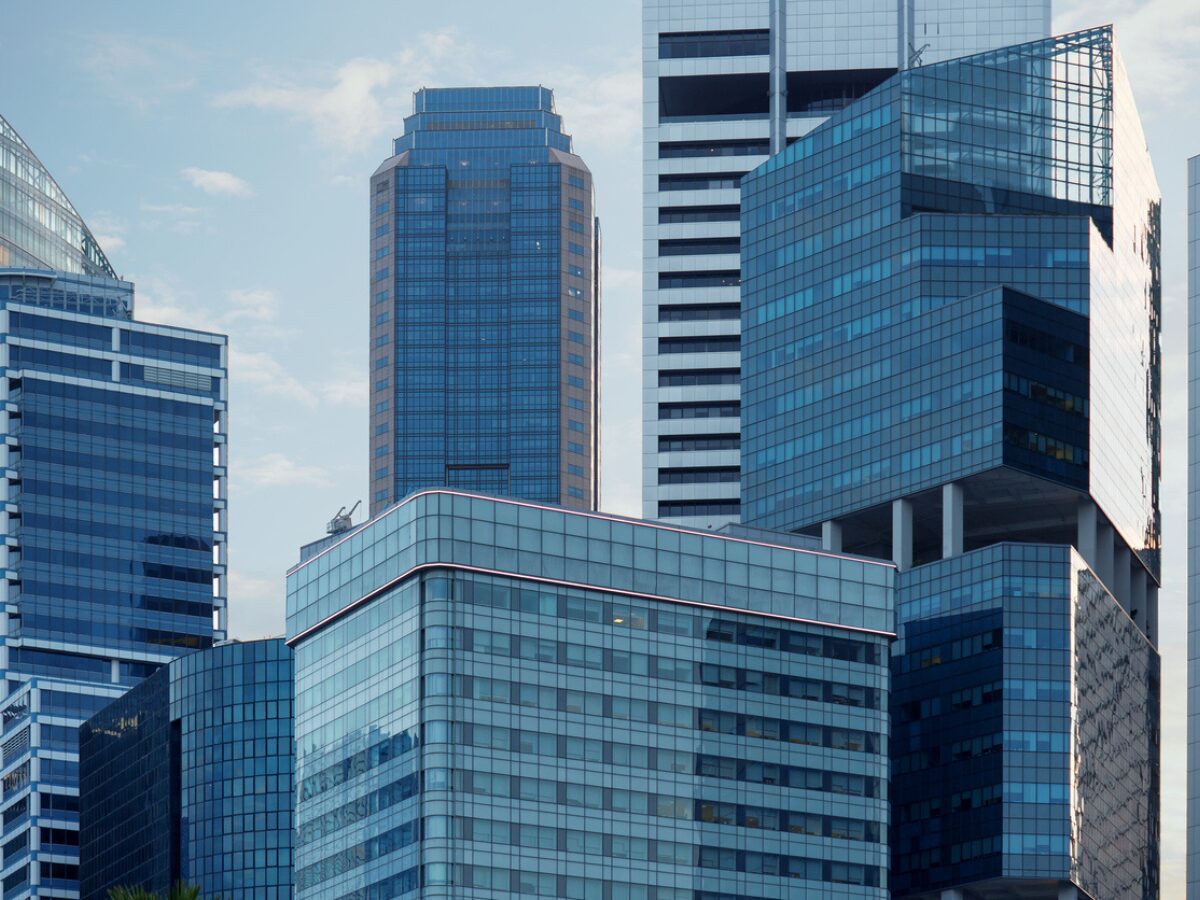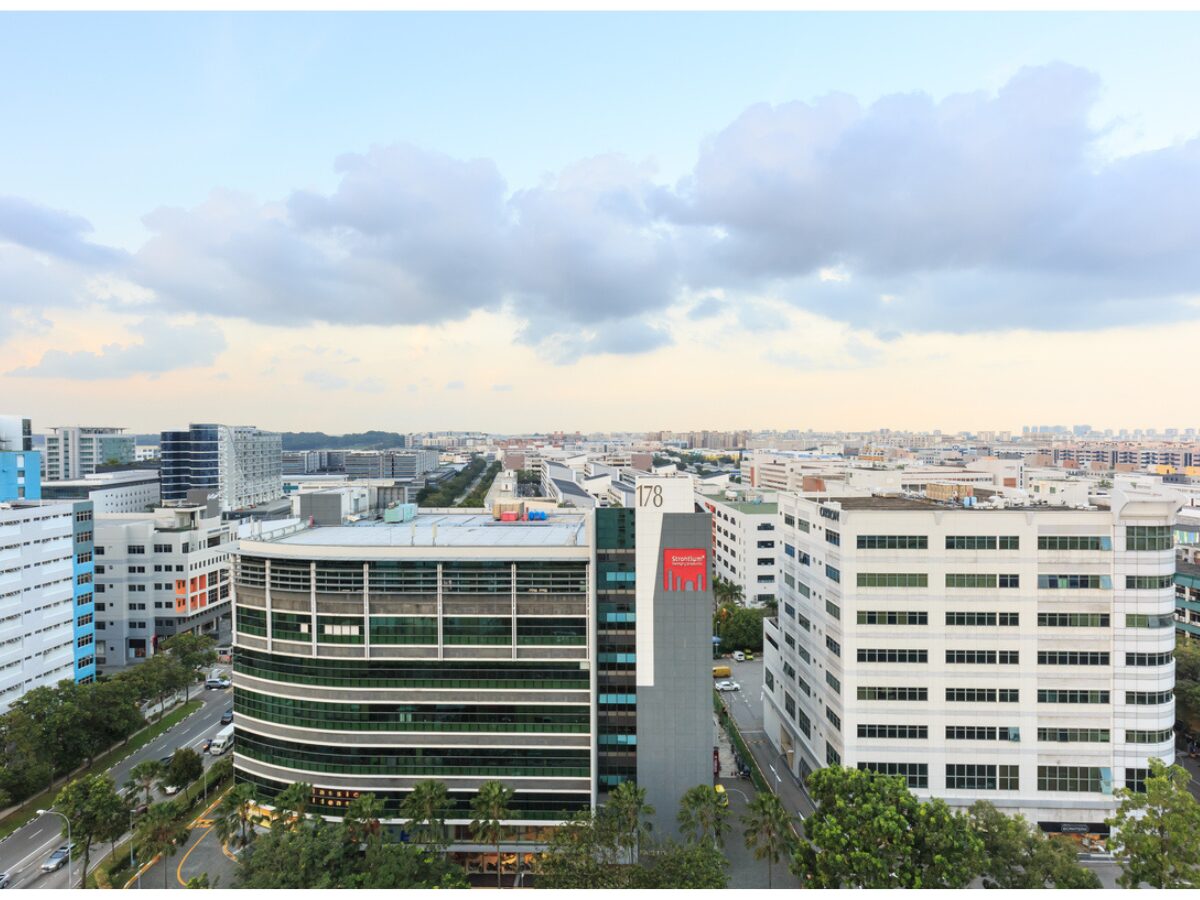Singapore’s commercial and industrial property markets remained steady in Q3 2025, despite showing signs of moderated growth. Data from both the Urban Redevelopment Authority (URA) and JTC highlighted a softer quarterly performance, but the overall fundamentals stayed resilient.
Vacancy rates continued to improve, rental demand remained firm, and investor interest stayed consistent. These trends unfolded against a backdrop of easing inflation and falling interest rates – factors that helped sustain business confidence and lending activity.
Table of content
- Office occupancy and vacancy trends
- Market commentary: Strong demand and tight supply ahead
- Industrial market: Resilient growth and tightening vacancy
- Market commentary: Stability and selective growth
Office market: Slight dip in rentals but healthier occupancy

The office sector saw a marginal dip in overall rents during Q3 2025. URA’s rental index for offices in the central region eased by 0.1% quarter-on-quarter (qoq), following a 0.3% decline in Q2. The price index also fell slightly by 0.2% qoq after a 1.1% drop in the previous quarter.
These modest decreases point to continued caution among occupiers. Some firms are still reassessing space needs in light of hybrid work arrangements and cost management strategies. However, the adjustments remain mild – indicating stability rather than weakness.
Office occupancy and vacancy trends
Despite slower rental momentum, occupancy improved slightly. The islandwide office vacancy rate narrowed to 11.2%, from 11.4% in Q2. This improvement signals healthier space absorption and suggests that underlying demand remains present, particularly for well-located properties.
The amount of occupied office space grew by about 1,000 sqm in Q3, though at a slower pace than the previous quarter’s 9,000 sqm expansion. Meanwhile, total office stock contracted by around 24,000 sqm, partly due to the redevelopment or conversion of older buildings.
Steady pipeline of new supply
As of Q3, about 870,000 sqm (gross floor area) of office space was in development, only slightly higher than the 868,000 sqm reported in Q2. This steady stream of future supply should help prevent any sharp fluctuations in occupancy or rents in the near term.
Prime and Grade-A segments continue to lead
At the higher end of the market, prime and Grade-A offices continued to perform better than average. According to Knight Frank, rents for premium offices in the Raffles Place and Marina Bay areas increased by 0.3% qoq to about S$11.41 per sqft per month.
This upward trend was supported by tight supply and sustained interest from multinational firms and financial institutions. Many occupiers remain willing to pay a premium for buildings that offer quality design, strong sustainability credentials, and proximity to major transport and amenity hubs.
Conversely, older and lower-tier buildings continued to face mild rental pressure as tenants upgraded to newer developments or reduced space footprints. This divergence illustrates the market’s ongoing “flight-to-quality” trend, where well-located and well-maintained assets continue to draw steady demand.
Read more: CBD Grade A office rents climb 0.5% in Q3 2025 as vacancy dips to 4.7%
Market commentary: Strong demand and tight supply ahead
According to Mr. Wong Xian Yang, Head of Research, Singapore & SEA at Cushman & Wakefield, the office market is expected to remain supported by limited new completions and improving business sentiment, barring any major economic shocks.
Most new office developments have already achieved strong leasing momentum. For instance, IOI Central Boulevard Towers in the Downtown Core is nearly fully occupied, while Paya Lebar Green outside the Central Region has reportedly been fully leased out. This trend highlights the sustained appetite for Grade A offices across both CBD and suburban areas.
Looking ahead, the CBD Grade A supply pipeline remains tight, with only Shaw Tower (mid-2026) and Newport Tower (2027) expected to add about 0.6 million sqft of net leasable area over the next two years – an average of just 0.3 million sq ft annually, or roughly one-third of typical yearly demand. Additionally, shadow space in the CBD fell to just 0.1 million sq ft in Q3 2025, marking a nine-year low, further reflecting tightening availability.
Mr. Wong also noted that relocation activity is set to increase in 2026, driven by several key trends. The ongoing flight-to-quality movement continues as occupiers prioritise modern, well-connected offices. Meanwhile, falling global interest rates may encourage business expansion, and return-to-office momentum could prompt firms to reassess space needs. On top of that, redevelopments of older properties could lead to new waves of displacement demand.
Given these factors, Cushman & Wakefield maintains its projection for CBD Grade A rents to rise 2% to 3% year-on-year through 2025, with stronger growth of 3% to 5% expected in 2026 as conditions tighten further.
Industrial market: Resilient growth and tightening vacancy

The industrial property segment once again demonstrated its resilience in Q3 2025. JTC’s data showed that rents rose by 0.5% qoq – marking the twentieth consecutive quarter of growth, though slightly slower than the 0.7% gain seen in Q2.
Prices climbed by 0.6% qoq and 5.7% year-on-year (yoy), extending a six-quarter streak of increases. While the pace of growth has moderated, the consistency of these gains underscores the sector’s solid fundamentals and long-term strength.
Segment breakdown
Performance across industrial sub-segments varied:
- Warehouses remained the strongest performer for the 20th straight quarter, with rents rising 0.9% qoq and 2.7% yoy.
- Single-user factories saw rents climb 0.7% qoq and 2.1% yoy, showing a slight pickup in momentum.
- Multiple-user factories recorded a 0.4% qoq and 2% yoy increase, indicating stable growth.
- Business parks experienced a small 0.2% qoq decline – the first dip after three consecutive quarters of growth – though rents remained 2.3% higher year-on-year.
This mix reflects sustained demand in manufacturing and logistics, contrasted with softer leasing activity in business parks, where some tech-related tenants are still rightsizing operations.
Market commentary: Stability and selective growth
According to Cushman & Wakefield’s Executive Director for Logistics & Industrial, Brenda Ong, the industrial market’s strength is supported by macroeconomic improvements. Singapore’s manufacturing Purchasing Managers’ Index (PMI) reached 50.1 in September 2025, signalling expansion after previous periods of contraction.
Falling interest rates and moderating inflation have also helped sustain investor and occupier confidence. Positive rental reversions are expected to continue as leases are renewed, reflecting the robust rental growth achieved over the past few years.
Warehouse demand, in particular, remains strong. Third-party logistics operators are consolidating operations into newer, more efficient facilities – a trend commonly referred to as “flight-to-quality.” This preference for modern, well-connected logistics assets has driven much of the rental resilience in the warehouse segment.
Singapore’s overall industrial vacancy rate fell to 10.9% – the lowest since Q4 2022. This tightening of vacancies suggests that space absorption is improving, particularly for high-quality developments.
Several major projects were also completed in Q3, including:
- CT Foodnex (0.2 million sqft), a multiple-user food factory project.
- 15 Benoi Sector (1.1 million sqft), a single-user warehouse.
- 5 Toh Guan Road East (0.5 million sqft), a multiple-user logistics hub.
These new developments have seen strong take-up rates, especially within the prime logistics segment, where available space remains scarce. In fact, the next major logistics project, Logis Hub @ Clementi by CapitaLand Ascendas REIT, isn’t expected to be completed until 2028, underscoring just how limited supply is in the short to medium term.
Business parks continued to see a split in performance: city-fringe locations recorded vacancy rates around 7.9%, while suburban areas remained high at 28.3%. However, with fewer new completions expected beyond 2025, occupancy levels are likely to stabilise over the medium term.
In the longer term, the widening rental gap between office spaces and business parks might also boost the appeal of suburban business parks, particularly for firms looking to relocate or expand.
Stock, occupancy, and future supply
By the end of Q3 2025, Singapore’s total industrial stock stood at 53.9 million sqm, with an overall occupancy rate of 89.1% – up 0.3 percentage points from the previous quarter.
Occupancy rose across most segments:
- Warehouses: +0.8 percentage points
- Business parks: +0.3 percentage points
- Single-user factories: +0.1 percentage points
- Multiple-user factories: unchanged
Looking ahead, around 210,000 sqm of industrial space is expected to be completed in Q4 2025. Of this, about 61% will come from single-user factories, 36% from multiple-user factories, and 3% from warehouses.
Between 2026 and 2028, the total supply pipeline is expected to reach 3.6 million sqm, translating to an average of 1.2 million sqm of new space each year. Given Singapore’s strong industrial demand base, this pipeline appears manageable and is unlikely to create significant oversupply.
Investment and transaction activity
Investment activity in the industrial segment remained healthy despite a modest slowdown. Transaction volumes dipped by about 5% yoy, based on caveats lodged, but still exceeded pre-pandemic averages.
Investor interest continued to centre on niche asset classes such as data centres, food production facilities, self-storage units, and properties that can be adapted for specialised uses. Many small and medium-sized enterprises also pursued ownership of their premises to ensure long-term stability and cost control.
With interest rates easing, the market has begun to see more favourable yield spreads and positive carry opportunities – factors that could encourage renewed investor participation in the quarters ahead.
Outlook for the rest of 2025 and early 2026
Heading into the last quarter of 2025, the industrial market is expected to stay stable, supported by strong fundamentals and limited new supply.
Investor appetite is also likely to remain healthy, particularly in segments like prime logistics, data centres, and specialised manufacturing facilities, which continue to offer solid income potential.
As inflation cools and borrowing costs ease, you can expect a more favourable investment landscape, one that rewards stability and quality assets over speculative plays.
Wrapping up
Our commercial and industrial property markets are holding steady despite a softer pace of growth.
The industrial sector remains the stronger performer, continuing to post positive rent and price movements while keeping vacancies low. Meanwhile, the office market, though slightly softer, is showing improved occupancy and resilience in the prime segment.
Across both markets, prime-grade and well-located assets remain highly sought after, while older properties face mild pressure as occupiers focus on quality and efficiency.
Overall, expect a cautiously optimistic outlook moving forward. With macroeconomic conditions improving, interest rates easing, and supply levels remaining under control, Singapore’s property market appears well-positioned to maintain its balance into early 2026.
The post URA and JTC data show steady commercial and industrial property market in Q3 2025 appeared first on .





















